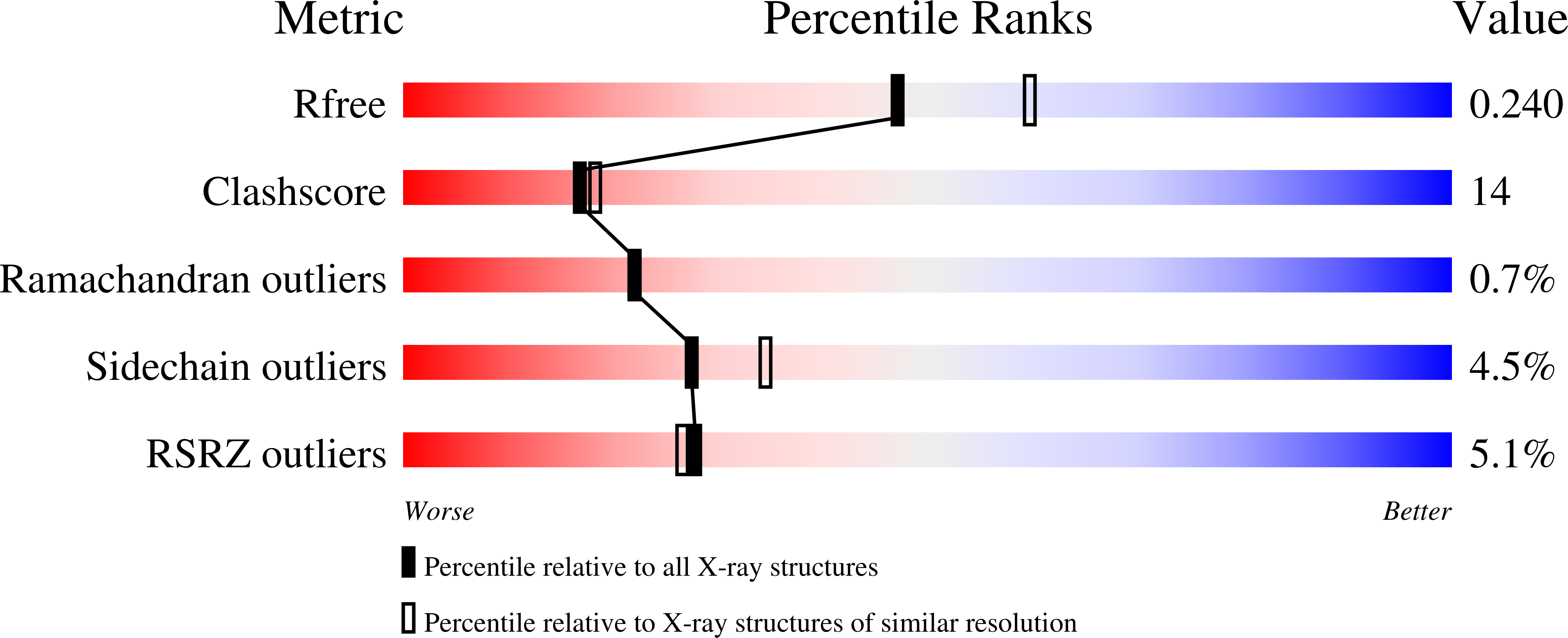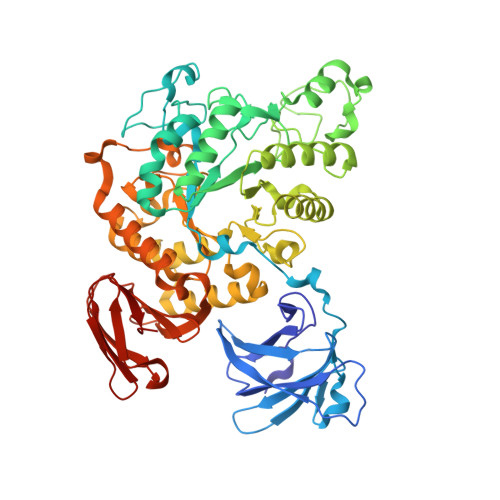The crystal structure of Thermoactinomyces vulgaris R-47 alpha-amylase II (TVA II) complexed with transglycosylated product
Mizuno, M., Tonozuka, T., Uechi, A., Ohtaki, A., Ichikawa, K., Kamitori, S., Nishikawa, A., Sakano, Y.(2004) Eur J Biochem 271: 2530-2538
- PubMed: 15182368
- DOI: https://doi.org/10.1111/j.1432-1033.2004.04183.x
- Primary Citation of Related Structures:
1VB9 - PubMed Abstract:
Alphan alpha-amylase (TVA II) from Thermoactinomyces vulgaris R-47 efficiently hydrolyzes alpha-1,4-glucosidic linkages of pullulan to produce panose in addition to hydrolyzing starch. TVA II also hydrolyzes alpha-1,4-glucosidic linkages of cyclodextrins and alpha-1,6-glucosidic linkages of isopanose. To clarify the basis for this wide substrate specificity of TVA II, we soaked 4(3)-alpha-panosylpanose (4(3)-P2) (a pullulan hydrolysate composed of two panosyl units) into crystals of D325N inactive mutated TVA II. We then determined the crystal structure of TVA II complexed with 4(2)-alpha-panosylpanose (4(2)-P2), which was produced by transglycosylation from 4(3)-P2, at 2.2-A resolution. The shape of the active cleft of TVA II is unique among those of alpha-amylase family enzymes due to a loop (residues 193-218) that is located at the end of the cleft around the nonreducing region and forms a 'dam'-like bank. Because this loop is short in TVA II, the active cleft is wide and shallow around the nonreducing region. It is assumed that this short loop is one of the reasons for the wide substrate specificity of TVA II. While Trp356 is involved in the binding of Glc +2 of the substrate, it appears that Tyr374 in proximity to Trp356 plays two roles: one is fixing the orientation of Trp356 in the substrate-liganded state and the other is supplying the water that is necessary for substrate hydrolysis.
Organizational Affiliation:
Department of Applied Biological Science, Tokyo Univrsity of Agriculture and Technology, Tokyo, Japan.
















